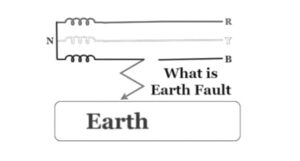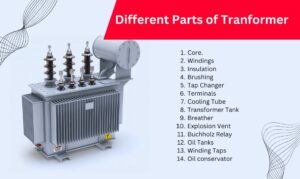According to Britannica, a transformer is a device that transfers electric energy from one AC (alternating-current) circuit to one or more other circuits by either increasing (stepping up) or reducing (stepping down) the voltage. Usually, the input voltage of a transformer is 220 V, and the output voltage is 44 V, respectively. In power supplies, a transformer makes electrical power accessible as it travels from a power utility to an office, home, worksite, or other location. Transformers can be categorized in terms of Core, Core Design, Voltage Levels, Usage, Windings, Insulation Used, and Phase. Some popular transformers are Toroidal or Toroid Transformer, High Voltage Transformer, Power Transformer, Auto Transformer, Generator Step-Up Transformer, Auxiliary Transformer, and Isolation Transformer. In this blog, we will discover more about isolation transformers.
What is Isolation Transformer?
Isolation transformers are transformers that physically separate primary and secondary windings in order to prevent undesired noise from being transferred from the input winding to the output winding. Basically, an isolation transformer provides physical and electrical isolation between two circuits and eventually protects the electrical & electronic circuits.
The transformer coil windings are built for an input and output voltage of 240v each. Isolation transformers contribute to preventing DC signals from transferring from one circuit to another while allowing AC signals to pass. Grant’s Isolation Transformers are a leading brand that manufactures high-quality isolation transformers.
- Components of Isolation Transformer
An isolation transformer has two coils of wire around an iron core which is made of silicon iron or nickel-iron core or amorphous alloy.
- Application of Isolation transformers
Isolation transformers are used in various industrial, commercial, and residential facilities. They are used for powered devices such as computers, medical equipment, or laboratory test equipment. Isolation Transformer is also used in an Oscilloscope (a laboratory instrument commonly used to display and analyze the waveform of electronic signals). It is essential to use isolating transformers when an oscilloscope measures the signal in an electrical circuit that is not galvanically isolated row the network.
How do Isolation Transformers work?
Isolation Transformers are based on magnetic induction, which employs a magnetic field to produce EMF in another circuit without influencing the frequency. Also, capacitive coupling between the two windings is considered when designing isolation transformers. AC from primary to secondary windings would be coupled due to the capacitance between the primary and secondary windings.
An isolation transformer functions similarly to other types of transformers, but its primary function is to provide galvanic separation in an electrical circuit. These can be used as step-up or step-down transformers; however, their turns ratio is typically 1:1. This signifies that the voltages in the primary and secondary circuits are the same. Hence, isolation transformers are heavily utilized in transmission and distribution networks to step up and down voltage levels.
Types of Isolation Transformers
1. Shielded Isolation Transformer
Shielded Isolation Transformers (with Single Electrostatic Shield) own a grounded shield. Whereas in a shielded isolation transformer with Double Electrostatic shields and a shielded Isolation Transformer with Triple Electrostatic shields, there are two and three grounded shields, respectively.
2. Ultra Isolation Transformer
This transformer’s distinct construction reduces all types of electrical noise, particularly common mode noise.
3. Constant Voltage Transformer
It is a 1:1 transformer that converts a fluctuating input into a constant average output using a tank circuit comprising a high-voltage resonant winding and a capacitor.
4. Galvanic Isolation Transformer
Galvanic isolation is used to achieve electrical isolation.
5. Drive Isolation Transformers
This transformer offers a voltage shift to suit the SCR (Silicon Control Rectifier) drive’s voltage requirements while magnetically separating the incoming line from the motor drive. Drive Isolation Transformers are used with industrial heating.
6. Dry Isolation Transformers
The core and windings of a dry isolation transformer are enclosed in a sealed, pressurised, airtight container or epoxy resin.
Functions and Purpose of Isolation Transformer
Lighting, static electricity, or sudden change in voltage usage can cause the production of voltage spikes, transients, and surges. The voltage spikes carry high voltages – from a few volts to several thousand volts. If such high voltage spikes reach the load, it can interrupt services or damage the equipment. In such a case, if we connect an isolation transformer between the power supply lines, the voltage spikes can be reduced before reaching the load. So, the main function of an isolation transformer is to minimise power surges.
The following are the primary purposes of the isolation transformer:-
- To reduce short-circuit current: When a short-circuit occurs on the load side, the isolation transformer limits the short-circuit current of the system.
- Impedance transformation: Isolation transformers can uplift system impedance, making it easier to employ the protection device.
- Anti-interference: Isolation transformers can prevent the transmission of some harmonics.
- Stabilise the system voltage: An isolation transformer will help reduce the impact on the system voltage when heavy load equipment is needed to start.
- Eliminate ground loops: An isolation transformer can be used to eliminate a ground loop that is intrinsic to the circuit design and thus not accidental.
Benefits of an Isolation Transformer
-
Enhances Safety
A Leakage current is a current that any electrical device returns to the earth’s return channel. An isolation transformer functions as a physical barrier between the power supply side and the outlet. This enables the earth’s return path to be safely disconnected, preventing EMIs from entering the power supply.
In addition, isolation transformers provide maximum safety since these transformers complete the power source circuit, protecting you from electrically generated shocks. Because an isolation transformer reduces electric shock, it is chosen as the best option for sensitive equipment.
-
Surges are reduced.
A power surge that occurs when the device’s input voltage exceeds the required level can damage all plugged-in devices and electronics. In this case, an isolation transformer lowers power surges and protects Direct Current signals from power surges by isolating them from the power source. Basically, it acts as a surge protection device.
-
Isolation Transformer increases power quality.
Electrical devices used in our homes or businesses consume all current from the power source. When isolation transformers are used, they lessen the possibility of current leakage, raising the standard of the power delivered to the machinery. With an isolation transformer, essential equipment can achieve the best performance and also enjoy improved equipment durability.
-
It reduces Common-mode noise.
Unwanted electrical signals enter power and signal circuits, causing electrical noise. This electrical noise in electrical devices is reduced by using an isolation transformer. To be more specific, an isolation transformer prevents the transfer of common mode voltage from primary to secondary and from secondary to primary. This can help in solving issues related to data communication errors due to the presence of common mode voltage. Also, isolation transformers can prevent sound or noise created by connecting the signal of audio amplifiers to the speaker output circuit.
However, causes of electrical noises in isolation transformers can be because of the changing electrical components (like capacitors, MCCBs, ACBs, switching equipment like inverters, converters, SMPS, etc., anomalies in power quality and natural causes such as lightning, static charge precipitation, and electrical discharges in the atmosphere.
Key Aspects to Consider When Selecting an Isolation Transformer
In most cases, the purchase of an isolation transformer depends on the desired outcome and type of usage. However, there are some other considerations when buying your isolation transformer. Some of them are:
Voltage
The main use of transformers is to change the primary power supply voltage. To put it straight, the primary power supply voltage decides the transformer’s input voltage; however, the users’ needs can determine the output voltage.
Number of phases
First, you need to decide whether to use a single-phase or a three-phase requirement and choose your variant accordingly.
Load Requirement
To figure out the requirement of your load, both the size and the type of load are involved.
Location
Another aspect considered when buying an isolation transformer is the place or location where a user will install the transformer. It can be indoors or outdoors, depending on your needs.
Are Isolation Transformers Free of Disadvantages?
Even though isolation transformers have high performance or efficiency, they still have disadvantages. The first disadvantage is that when an isolation transformer acts as a Pulse Transformer, it operates at a moderate frequency level, and distortion is produced independently of the output waveform. Also, when an isolation transformer is operating at a DC pulse sign or signal, the saturation property of the core decreases. Another prime disadvantage of isolation transformers is that they are more expensive, all thanks to their unique structure.
Difference Between Isolation Transformer and Regular Transformer
A regular transformer is biased to change the voltage, whereas some transformers’ primary side and the secondary side of the voltage are not isolated. Compared with the regular transformer, the isolation transformer emphasises isolation voltage security. Furthermore, isolation transformers are more efficient than regular transformers. In terms of cost, isolation transformers are generally more expensive than regular transformers.
Isolation Transformers at Grant Transformers
Grant Transformers is a transformer manufacturing and supply company in Australia. Our transformers are manufactured to meet customer needs for various applications. Here, we supply up to IP66 isolation transformers for outdoor use or wet applications. To know more about our isolation transformed, you can contact us.



